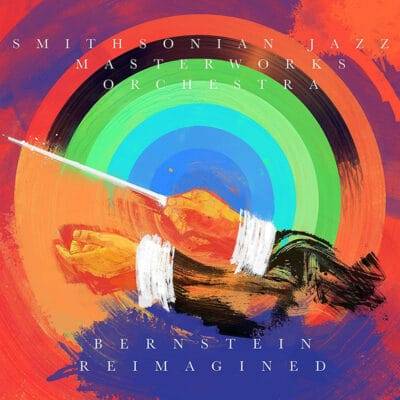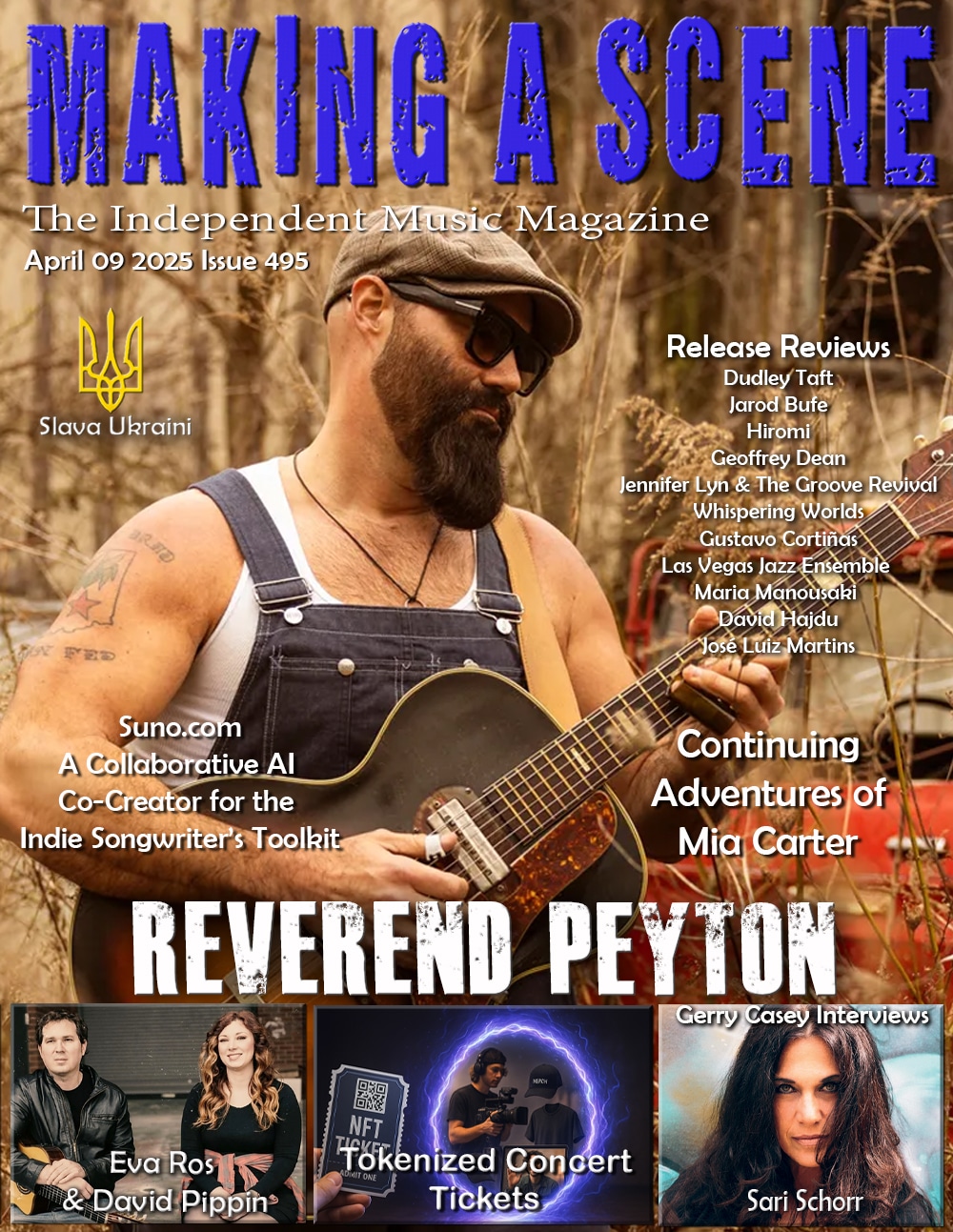Smithsonian Jazz Masterworks Orchestra Bernstein Reimagined
 Smithsonian Jazz Masterworks Orchestra
Smithsonian Jazz Masterworks Orchestra
Bernstein Reimagined
MCG Jazz
Seeing the name Leonard Bernstein, will make most associate this ambitious project with classical music yet it reads more like a Duke Ellington or Gil Evans record. In fact, Bernstein stated that Ellington wrote symphonic jazz while he wrote jazz symphonies. Also, the legendary composer once called jazz “the ultimate common denominator of the American musical style.” The music made a profound impact on Bernstein’s work, not only in the more explicit “jazziness” of his work in musical theater, but throughout his “serious” orchestral music as well. Jazz artists in turn felt the influence of Bernstein’s innovations, with interpretations of his work recorded by such icons as Bill Evans, Dave Brubeck, Oscar Peterson, Wes Montgomery, Wayne Shorter, and countless others. In 2019 Bobby Sanabria won a Grammy for West Side Story Reimagined.
This one heads in different directions, however in its generous 70 plus minutes. The Smithsonian Jazz Masterworks Orchestra, 20 plus pieces in all, mines the composer’s vast repertoire for a vibrant, surprising new set of music with music originally commissioned as part of the worldwide celebration of Bernstein’s centennial year in 2018. SJMO Artist Director and conductor Charlie Young explains, “Re-imagining Leonard Bernstein for this occasion required examining some of his compositions rarely associated with jazz. The resulting concert was a blast!” Instead, the project’s five inventive arrangers – Jay Ashby, Darryl Brenzel, Scott Silbert, Mike Tomaro and Steve Williams– find inspiration in the more obscure corners of Bernstein’s output: the symphonic works, spiritual music, operas, lesser-known musical theater pieces and even his sole film score, for the classic On the Waterfront.
The album opens with the first of three pieces taken from the young Bernstein’s first Broadway show, On the Town (later made into a movie starring Frank Sinatra and Gene Kelly). Scott Silbert’s arrangement of “Times Square” brings that Manhattan landmark back in its pre-Disneyfied glory with an Ellingtonian vigor that embraces the tune’s rapid-fire shifts in tempo and dynamics, featuring soloists Silbert (clarinet), Steve Williams (alto), Luis Hernandez (tenor), and Tom Eby (trumpet).The same show also yields the brassy “The Great Lover,” rendered with sharp, percussive bravado in Mike Tomaro’s bracing arrangement with Silbert (tenor), Bill Mulligan (alto), and Ken Kimery (drums) stepping forward. .and the swooning melancholy of Darryl Brenzel’s impressionistic take on “Lonely Town,” in which the lush horns evoke Maria Schneider’s charts. Jay Ashby’s arrangement of “Dream with Me” revives a Bernstein piece cut from the original 1950 Broadway production of the play Peter Pan (with Boris Karloff as Captain Hook). Ashby transfers the song’s heartrending vocal melodies to a fluid alto sax played by Director Young nested in fluttering flutes and clarinets to form a lovely, dream-like atmosphere.
Another vocal piece reinterpreted for horns is Silbert’s jaunty “Morning Sun,” originally penned for the 1952 opera Trouble in Tahiti and later recycled in its 1983 sequel, A Quiet Place. Pianist Tony Nalker solos. The latter is also the source for the “Postlude” that Mike Tomaro gives an exhilarating, tension-filled treatment that gives way to a hushed, tender ballad section underlying the soprano sax (Steve Williams) and piano (Nalker again) solos. One of the album’s most unexpected twists comes via one of its most obscure pieces. Taken from Divertimento for Orchestra, Bernstein’s contribution to the Boston Symphony Orchestra’s centennial celebration, “Waltz” is buoyed by a reggae groove and the unexpected steel pan playing of special guest Victor Provost.
The entrancing guitar of MCG Jazz Executive Producer Marty Ashby takes the lead on Williams’ transformative arrangement of “Meditation #1” from Bernstein’s Mass, turning a somber prayer into an act of urgent exaltation created by trombonist Jennifer Krupa and trumpeter Kenny Rittenhouse. Ashby comments, “Everybody had to be on their A games to play this music. It was very challenging music to pull together and the fact that we were looking through the lens of five different arrangers gave it an especially wide palette. But the music really resonated with the band, and it was a lot of fun to play.”
Brenzel’s arrangement of “Chichester Psalms I,” commissioned by the Cathedral of Chichester in Sussex, England in 1965, finds the warm, joyful side of the original’s choral spirituality, making the elusive 7/4 rhythms seem effortless and embracing with Hernandez as the lone soloist on tenor. The album ends with Silbert’s interpretation of a suite of themes from Elia Kazan’s On the Waterfront (famously starring Marlon Brando), which manages to be captivating and cinematic while featuring Kimery, Hernandez, and trumpeter Tom Williams.
Now for that Ellington comparison we began with – “Well, maybe that’s really the difference between us,” Leonard Bernstein once told Duke. “You wrote symphonic jazz, and I wrote jazz symphonies.” Flavio Chamis, a Brazilian-born, Pittsburgh-based composer/conductor who was a personal friend and frequent assistant conductor for Bernstein during the last several years of the composer’s life recalled those words as he summed up the strengths of Bernstein Reimagined. “This project falls directly between the two and becomes a third thing all its own, that sheds light on both. It’s very compelling music that reflects the broadness of Bernstein’s work, which is so open to many different ways of seeing.”
This is colorful, conducive to mind wandering music that paints cinematic and aural soundscapes, which ultimately become very soothing and relaxing, even through the brassier sections.
Jim Hynes
Buy Us a Cup of Coffee!
Join the movement in supporting Making a Scene, the premier independent resource for both emerging musicians and the dedicated fans who champion them.
We showcase this vibrant community that celebrates the raw talent and creative spirit driving the music industry forward. From insightful articles and in-depth interviews to exclusive content and insider tips, Making a Scene empowers artists to thrive and fans to discover their next favorite sound.
Together, let’s amplify the voices of independent musicians and forge unforgettable connections through the power of music
Make a one-time donation
Make a monthly donation
Make a yearly donation
Buy us a cup of Coffee!
Or enter a custom amount
Your contribution is appreciated.
Your contribution is appreciated.
Your contribution is appreciated.
DonateDonate monthlyDonate yearlyYou can donate directly through Paypal!
Subscribe to Our Newsletter
Discover more from Making A Scene!
Subscribe to get the latest posts sent to your email.













































